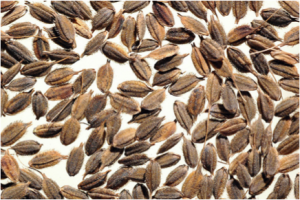By Marie Haga , Ann Tutwiler
Food biodiversity needs both systems, just like pandas need zoos and bamboo forests, say Marie Haga and Ann Tutwiler.
The efforts of many organisations mean that most of us understand the importance of conserving the biodiversity of wild animals and their habitats. But few of us think about food in the same way we think about pandas, even though the issues are much the same.
The effective and efficient conservation of agricultural biodiversity — the biodiversity that’s important for providing the food we eat — is vital to meeting the global challenges of food and nutritional security for an expanding world population under the threat of climate change, and growing pressures on land and water.
And as with pandas and other wild animals, conservation of agricultural biodiversity can and must be done both in the laboratory and in the field.
From pandas to seeds
If you had a choice, would you rather see a panda in a zoo, or in the bamboo forests of southern China?
For most of us, seeing wild and endangered animals in their own habitat and watching how they behave, adapt and survive in their natural surroundings would be the preferred choice. But, the role of zoos in conserving wild and endangered animals is equally important.
Many zoos are home to breeding programmes. These can help re-introduce animals into wild areas from which they have disappeared, and maintain the genetic diversity of small populations of threatened species. Zoos that are well-run carry out vital conservation research and can increase public support for conservation. And the only chance that most of us (and our kids) will have to see a panda is in a zoo.
Much in the same way, and for several decades now, dedicated researchers around the world have invested a great deal of effort in collecting and storing the seeds of different varieties of crops in genebanks, for what’s called ex situ conservation. Their collective work has created a precious global collection of over seven million seed, tissue, and other samples in many global and national genebanks.
“The problem is that systems of in situ and ex situ conservation have been largely disconnected for some time. Some conservationists even see them as antagonistic.
And while devotees of one side argue with the other, the diversity that underpins the food we eat is lost both in genebanks and in farmers’ fields.”
Marie Haga and Ann Tutwiler
At the same time, some concerns that apply to zoos — that they cannot maintain the evolutionary dynamics which allow ‘wild’ animals to evolve and adapt, for example — also apply to seed banks.
Researchers are increasingly recognising that in situ conservation is also important: maintaining crop and livestock diversity in farmers’ fields and farms, gardens, orchards, and the natural landscapes in which these are embedded.
A call for collaboration
Ex situ and in situ conservation each has their benefits.
It is relatively cheap to maintain crop diversity in a genebank, where it is safe from the vagaries of changing climates, and is readily accessible for research and breeding. But crop diversity stored in genebank is less accessible to farmers, and is not exposed to changing environments — which means it does not evolve and adapt.
On the other hand, crop diversity in farmers’ fields and under other in situ conditions, continues to evolve and adapt as a result of natural and human selections. As it evolves and adapts, this genetic diversity contributes directly to the resilience and sustainability of agricultural systems, as well as to farmers’ livelihoods and to their empowerment. But there’s a downside: it is more difficult for breeders to use in their crop improvement programmes.
This shouldn’t be about choosing one over the other — the world needs both conservation systems, with good communication channels and knowledge transfer between them. This will help to properly conserve the genepools of crops and make them available for use into the future, for food and nutritional security.
The problem is that systems of in situ and ex situ conservation have been largely disconnected for some time. Some conservationists even see them as antagonistic.
And while devotees of one side argue with the other, the diversity that underpins the food we eat is lost both in genebanks and in farmers’ fields.
Crop diversity in farmer’s fields continues to decline in many parts of the world, often driven by market forces beyond the control of farmers’ themselves. Diversity is also lost from genebanks — a shortage of funding and staff means collections are often poorly maintained.
But if we stop looking at these two forms of conservation as antagonistic but rather as complementary, attention can be focused on what matters most: how best to safeguard this diversity for the future.
First steps
The First International Agrobiodiversity Conference is an opportunity to begin anew. That’s why practitioners in all these fields, from all over the world, both industrialized and developing, and from both the formal and informal sector, are coming together in New Delhi, India this week.
This congress gives conservation and agro-biodiversity experts and policy makers the opportunity to start mapping out a future that breaks down barriers between the two approaches, integrating them to ensure global food and nutritional security.
Most importantly, this means helping politicians and the public understand that conserving the diversity of our food is just as important as conserving the diversity of wild animals.
The congress is a first step in the right direction.
Marie Haga is executive director of The Crop Trust, and Ann Tutwiler is director general of Bioversity International. Haga can be contacted on Twitter at @CropTrust, and Tutwiler at @AnnTutwiler.
This article was originally published on SciDev.Net. Read the original article.






